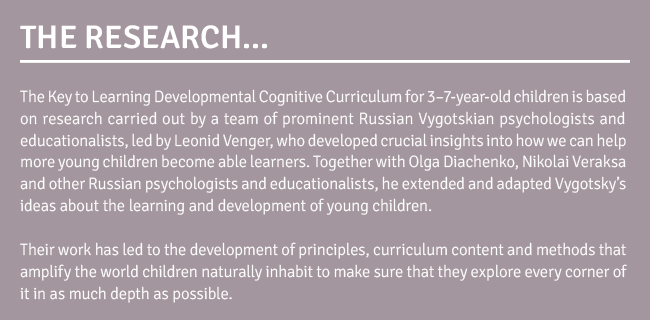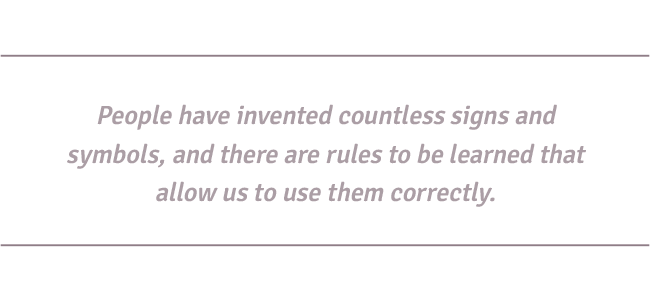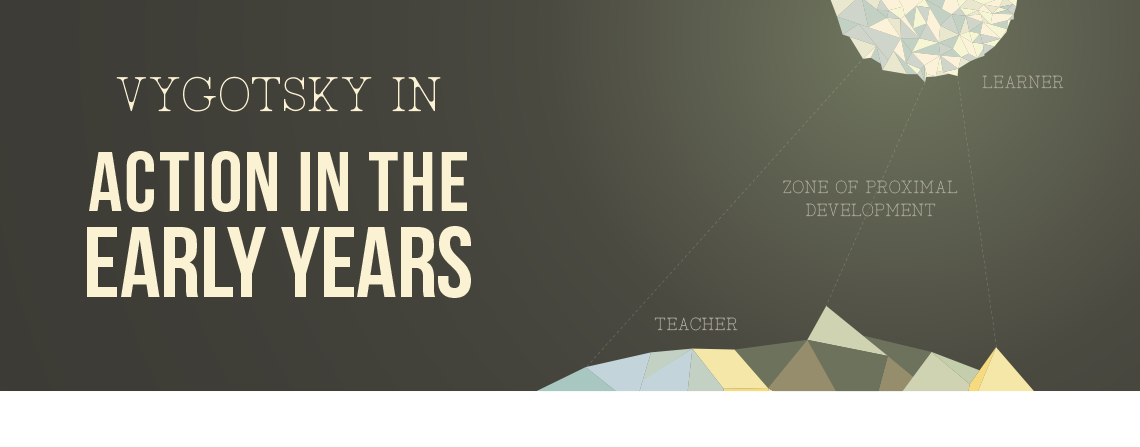Galina Dolya looks at the Key to Learning — the developmental cognitive curriculum for young learners.
There are two possible approaches for child educators. We can attempt to take children by the scruff of the neck and drag them into the adult culture, attempting to move them prematurely to the next stage of development.
Alternatively, we can allow children to live through their childhood as fully as possible, but work to help them deepen and enrich their child’s-eye view. Here we have the essence of a concept known as ‘developmental education’.
The aim of Key to Learning is not to speed up the developmental process, but rather to create cognitive, communicative and behavioural prerequisites that will allow children to construct a broader and deeper zone of proximal development. This is achieved through a series of activities, guided by the teacher, that are emotionally engaging, playful and enjoyable. During sessions, teachers lead short bursts of structured activity.
Sometimes they share their expertise with children, modelling and mediating the use of cultural tools through developmentally appropriate and engaging activity. At other times, perhaps during the same session, the teacher and children collaborate to create something together, through joint activity.

Finally, the expectation is that children will continue to do what they already do, spending much of their time engaged in spontaneous free-choice play under the watchful eye of a facilitating adult. Of course, at such times, teachers are free to enrich the range of available choices by leaving relevant materials from recent sessions available for the children to use independently.
Vygotsky believed that we must view human psychological development as a social achievement rather than an individual one. Young children’s abilities are not innate, or simply determined by biology. Children acquire their abilities with and from the people around them – from the social, cultural and educational context of their lives.
Development of learning abilities
The core of what young children learn is not a particular body of knowledge or a specific set of skills. After all, the skills and knowledge children need for survival depend on where they happen to be born, and vary from place to place. The universal higher mental functions required to analyse reality are at the heart of what all young children learn. How deeply and securely children are able to acquire them ultimately determines differences in their abilities.
The Russian psychologists Olga Diachenko and Nikolai Veraksa stress that the development of learning abilities determines the speed and flexibility with which we acquire and are able to apply new knowledge and skills. Young children must develop communicative, self-regulative and cognitive abilities: they need to be able to understand others and to make themselves understood; they need to be able to plan and to manage their own attention and behaviour; and they need to be able to build mental models of how the world works.
These are the general abilities we need: they are the learning abilities that are the prerequisites for success at school and for creative and intellectual achievement. The Key to Learning curriculum offers a unique and specific approach which focuses equally on the development of each of this trio of general learning abilities – communication, self-regulation and cognition – because all three are equally important.
Key to Learning
The Key to Learning curriculum has breadth and diversity, and offers specially designed optimal learning experiences (Story Grammar, Visual-Spatial, Sensory Maths, Developmental Games, Artographics, Logic, Creative Modelling, Exploration, Mathematics, Construction, You-Me-World and Expressive Movement) that amplify development but do not accelerate it.
Vygotskians believe that appropriation and internalisation of symbolic mediators is one of the main mechanisms of psychological development. The first step in this direction is to let children realise that signs and symbols can be used as substitutes for objects and processes.
For younger children, this process cannot be carried out in verbal-logical form, but should rely on perceptual images. Children spontaneously carry many substitutions when in a play situation: a chair becomes a car, or a pencil becomes a thermometer. The next step is to learn some social conventions for using perceptual symbols as substitutes.

But the first and most important difficulty we have to overcome lies not in learning the rules themselves but in understanding what they mean, and which side of reality is hidden behind them. Visual modelling makes learning and thinking visible so that children can see the underlying hidden reality.
Visual modelling – the ability to ‘translate’ information into a visual model using substitutes (signs and symbols) – facilitates intellectual problem solving. We learn to solve many problems using mental strategies to consider our options and make plans, rather than relying on trial-and-error procedures with real objects.
The other side of this coin is the development of creativity. Once we are able to decode the meanings of signs and symbols, and to comprehend the models others have created, we are free to reinterpret and to reinvent, to see in diverse ways. By owning the process of modelling, we gain the freedom to create our own models.
Special activities encourage children to use different types of substitutes for various objects, and to develop a wide range of visual models. A child confident with external forms of substitution and visual modelling (who can use symbols, drawings, diagrams, plans, etc.) becomes capable of using substitutes and visual models mentally. With their help, s/he is able to process the information offered by adults, visualising the results of his/her actions in advance. These are the qualities characteristic of a high level of cognitive development.
This is not a passive process but an active appropriation. Where the process is at its best, cultural tools are not merely learned in isolation as skills, but offered to and grasped by children as purposeful practical activity.
Cultural tools
When children are able to take over cultural tools so that they own them, they develop the ability not simply to solve conventional problems in old ways, but to innovate and sometimes to change or create the tools themselves.
This approach makes it possible to substantially increase the developmental effect of education and its influence on the development of cognitive abilities. It helps children to become independent learners. They begin to plan and organise their own activities, openly express their own point of view, provide creative solutions to various problems, interact freely with other people and – most importantly – believe in themselves and their abilities. It teaches giftedness!
Key to Learning is a guide for practitioners who would like to prepare young children for the rigorous school curriculum, and at the same time foster their age-appropriate behaviour and creativity.
Key to Learning crosses cultural boundaries. It has already been implemented in a large number of schools in England, Scotland, Wales, Russia, Poland and Singapore. Independent research has shown that its effect on the performance of the children is remarkable.
A two-year study evaluating the effectiveness of the Key to Learning curriculum in UK preschools suggested that the impact of this programme was greatest on the child’s vocabulary, creative language and focused attention. This was confirmed by experimental data which was collected at three time points and involved 83 children (aged three and four).
The five Key to Learning areas
- Psychological tools
- Symbolic literacy
- Visual modelling
- Self-regulation
- Play
There were significant differences in the children’s vocabulary and creative language. One group made, on average, 20 months’ progress during the 12 months of the intervention, while some children even advanced by three years. A second group made on average 18 months’ progress after 7 months of intervention.
What is striking about Key to Learning is its inclusivity: children who previously struggled to acquire new skills enjoyed their activities as much as the more able, and boys and girls were equally engaged as their imaginations flourished.
Clearly, Key to Learning has a marked impact on children’s cognitive development. SR


